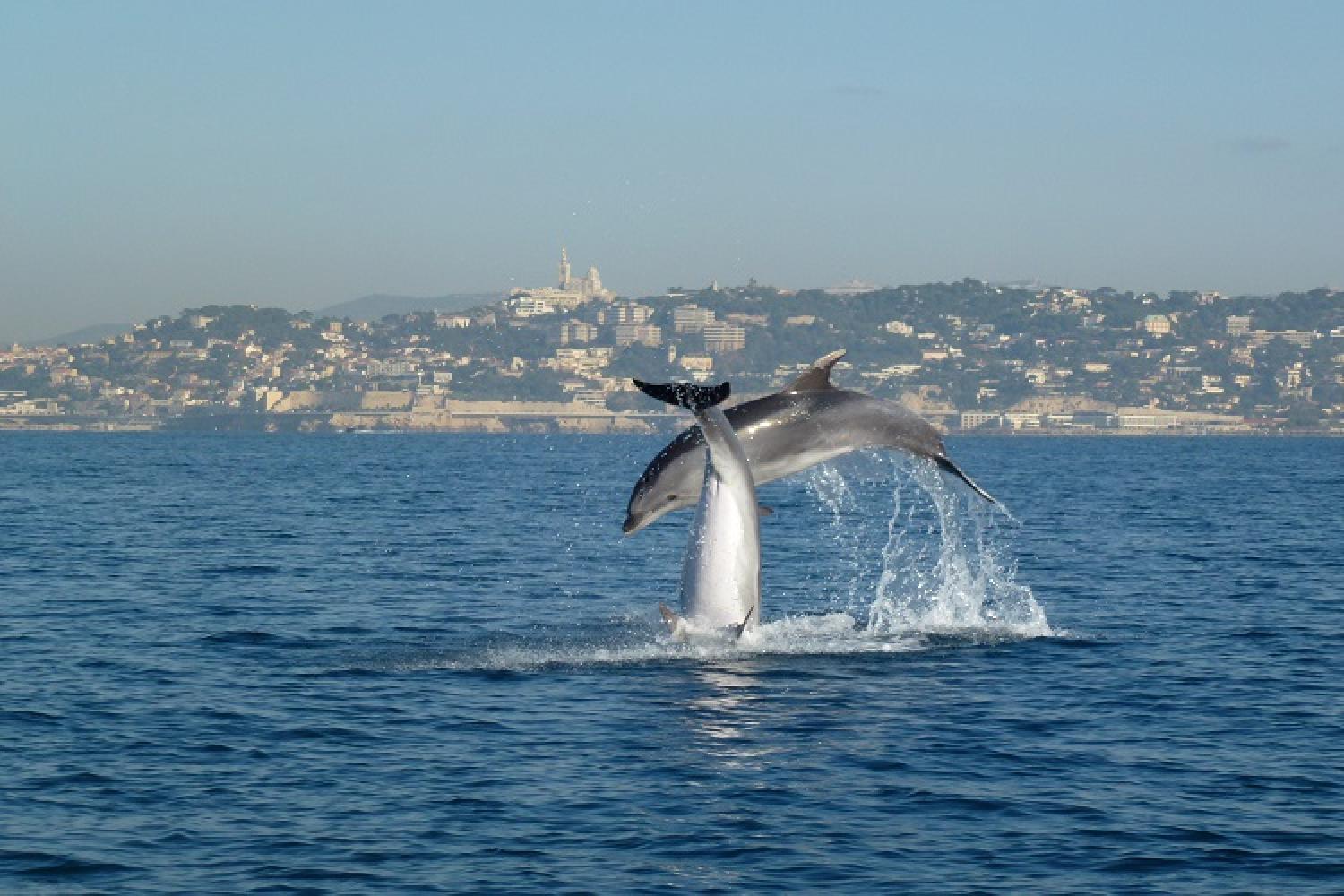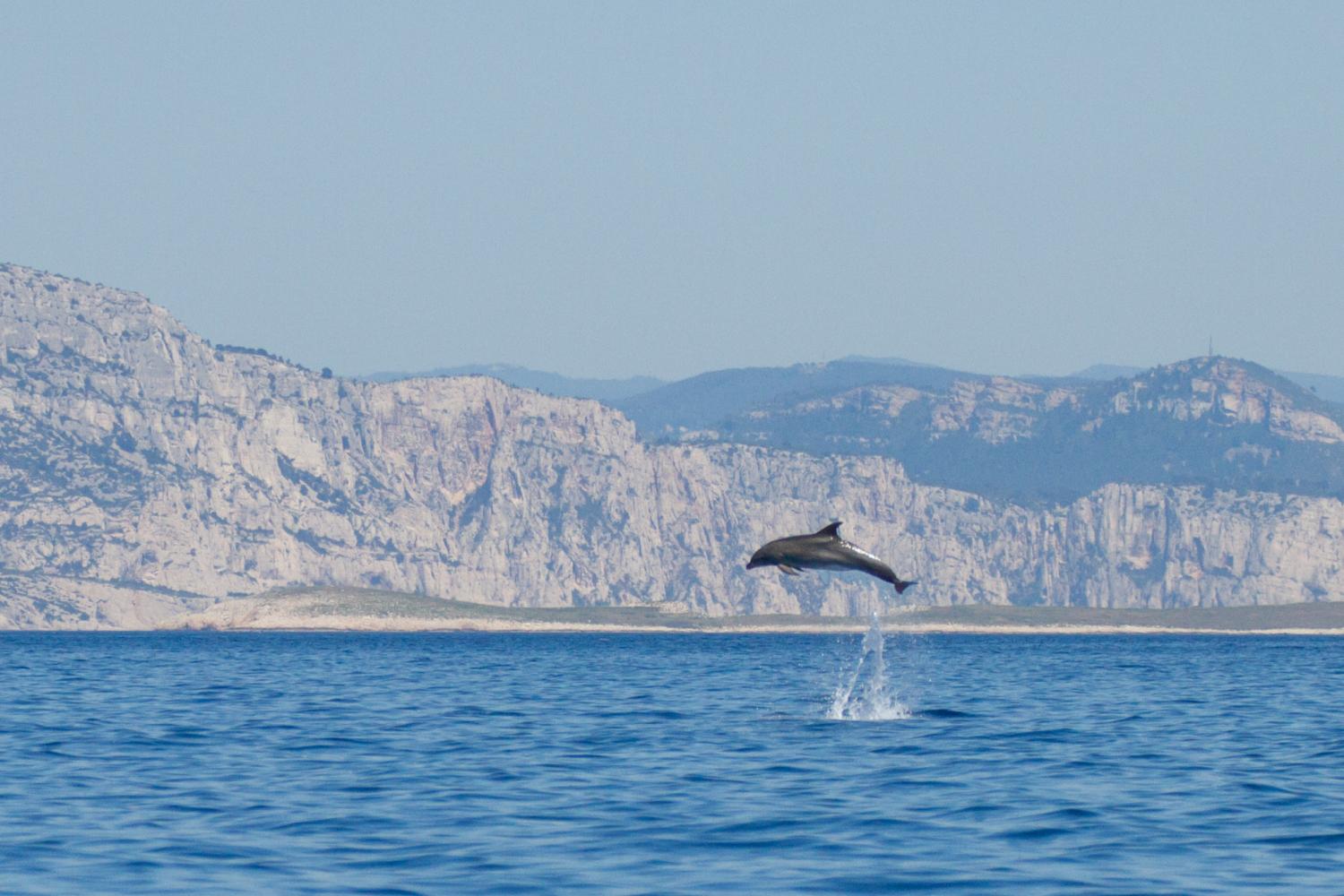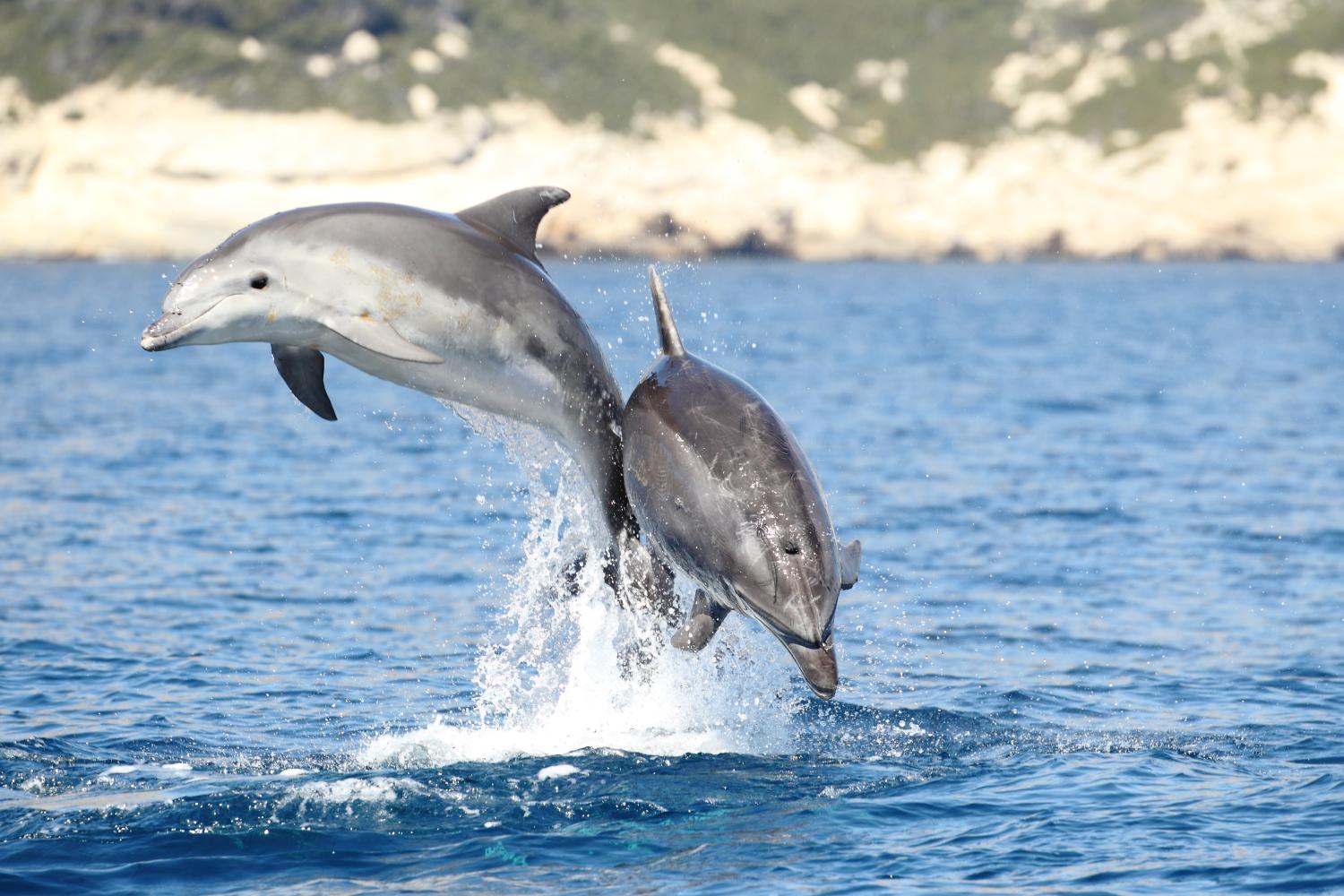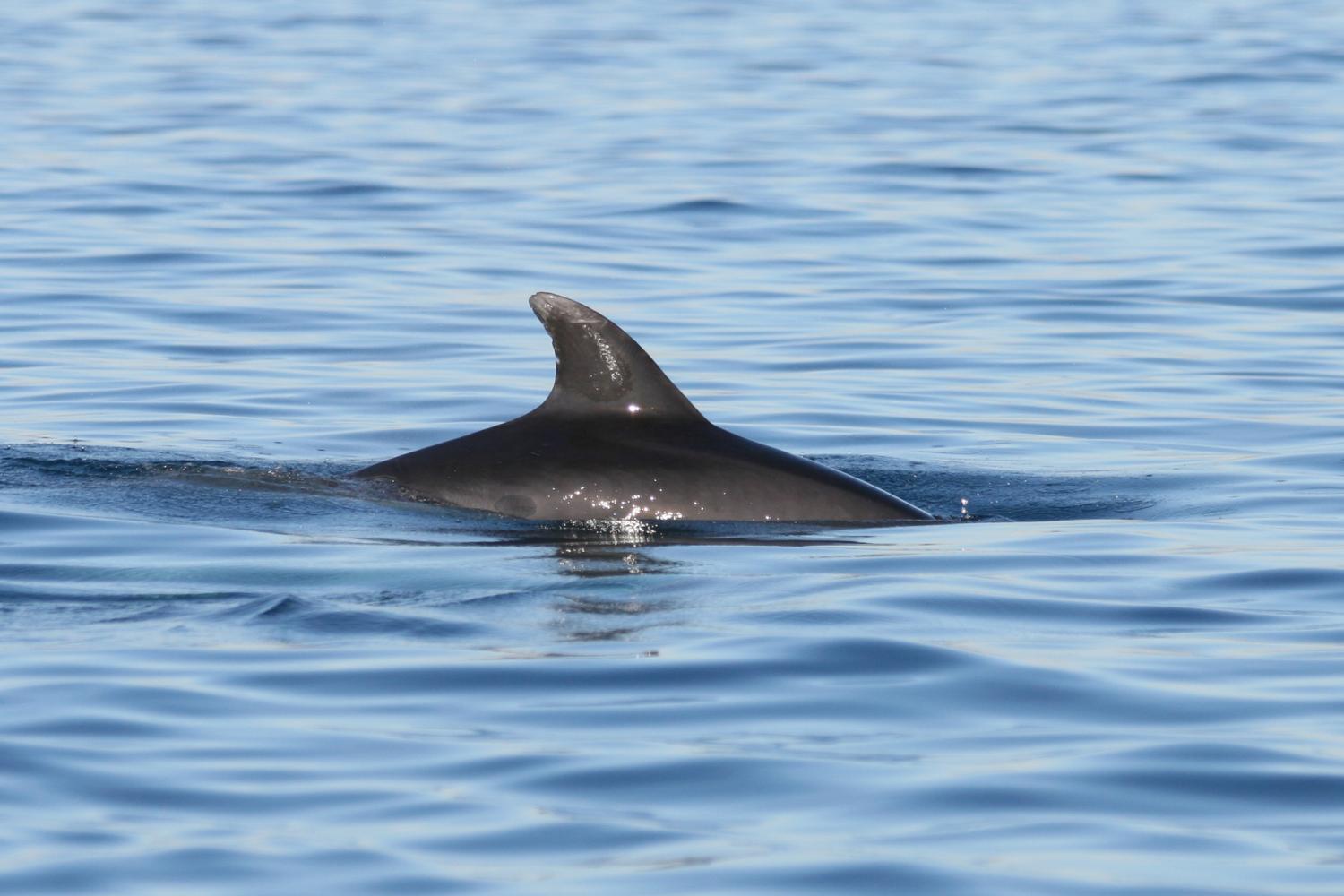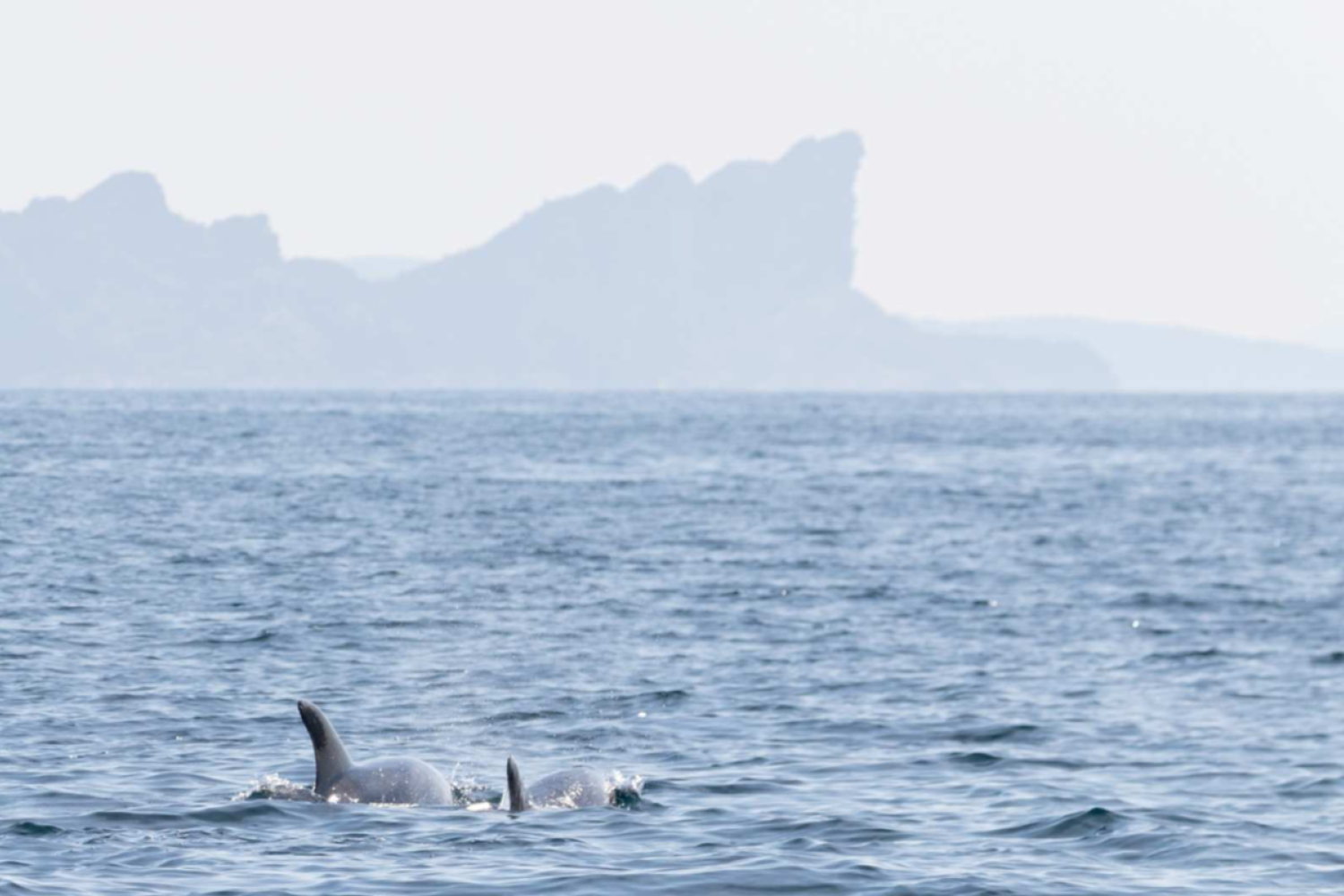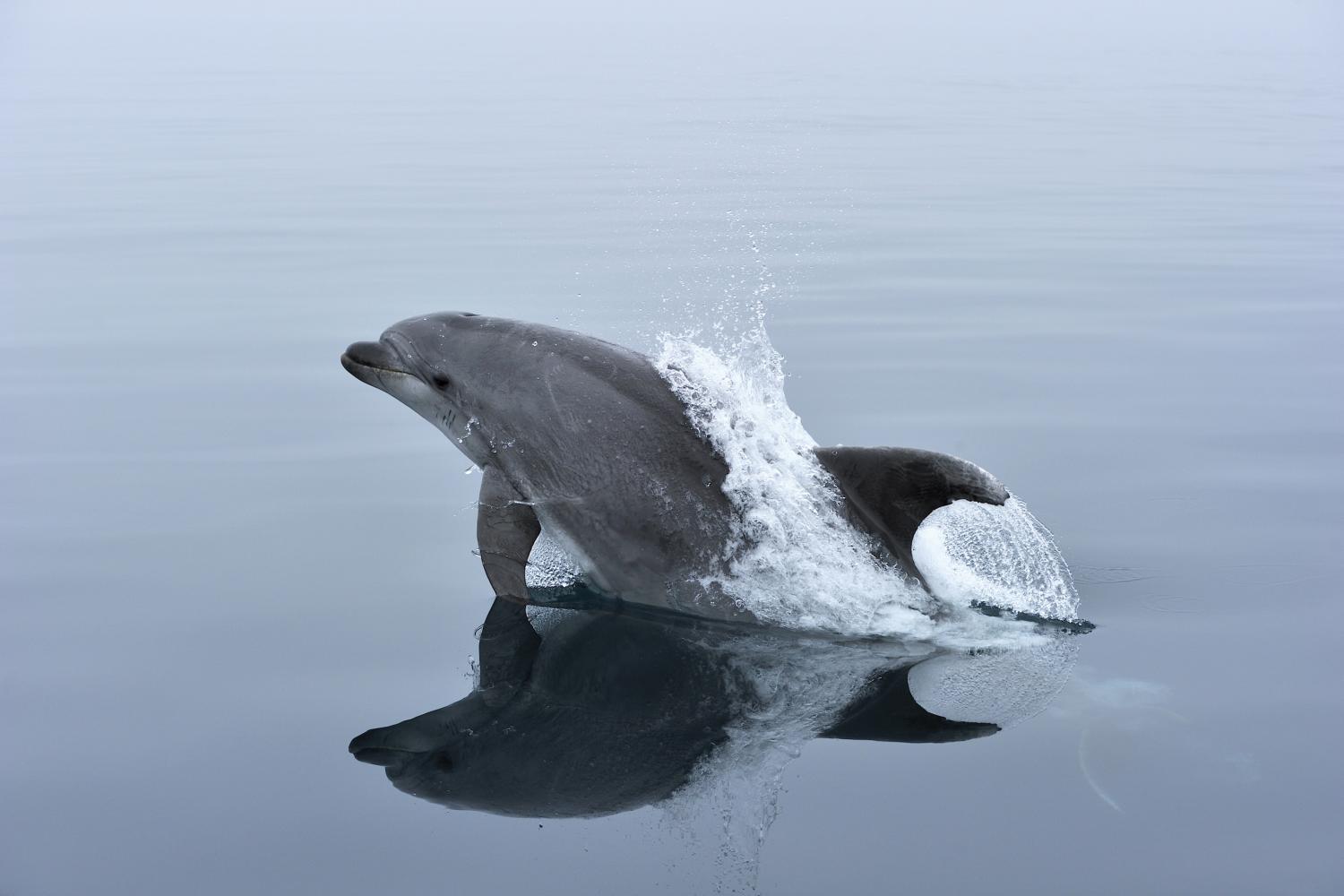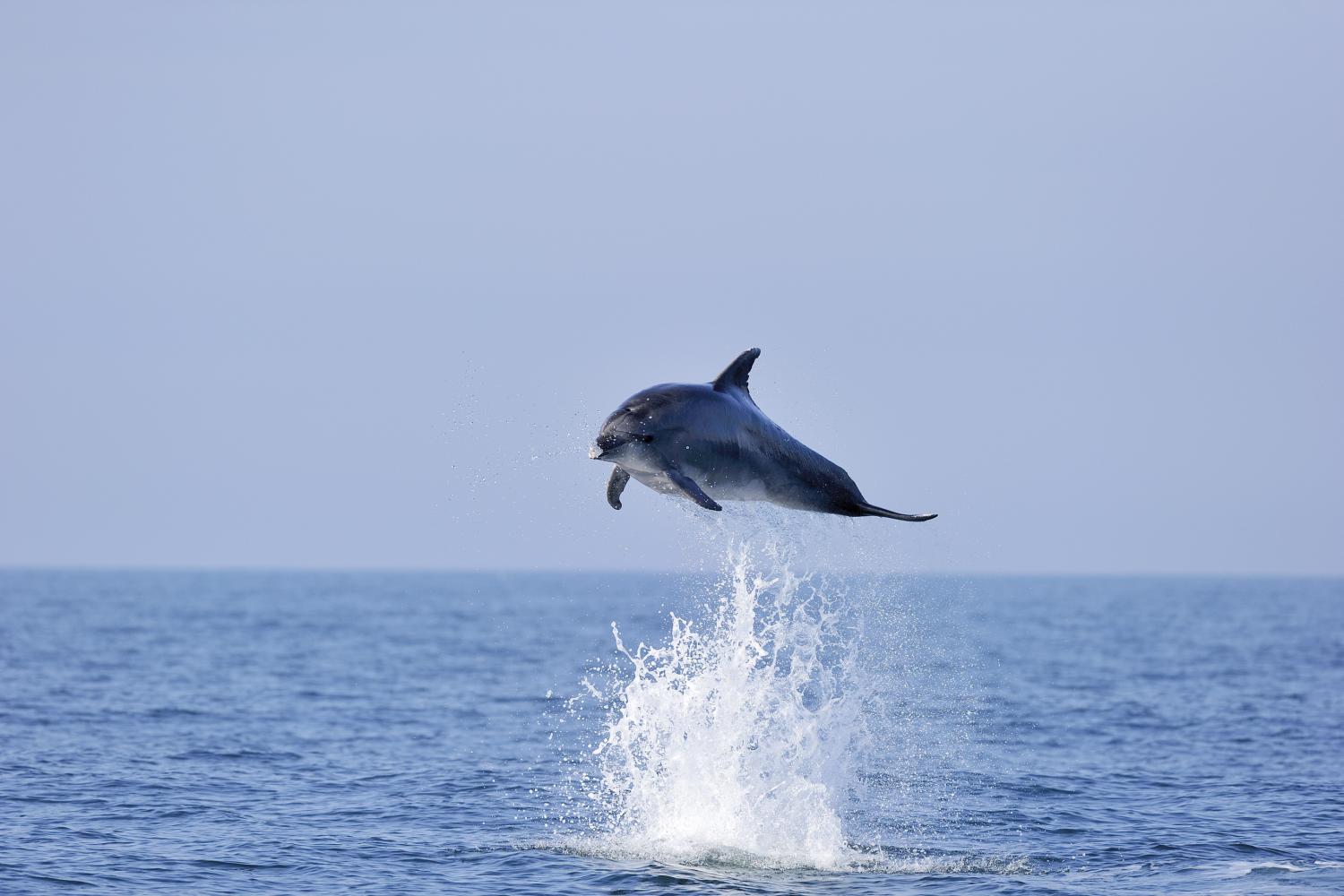Description
The common bottle-nosed dolphin can be recognised by its characteristic “smile”, formed by the folds of its beak and its fairly uniform dark grey colour. This is one of the biggest dolphins species and can measure up to four meters long. In the National Park it can be found mainly along the coastline where it lives in groups, called pods. It is a mammal, i.e the female gives birth at the end a 12-month gestation period and suckles her calf for 18 months.
Scientific name
Tursiops truncatus
Natural habitats
Pelagic zone
Did you know?
The common bottle-nosed dolphin never totally sleeps, a part of its brain always remains active.
Conservation stake
Low
Threats
- Pollution and changes to its environment
- Noise disturbance from maritime traffic
- Collision with boats
- Accidental capture in fishing nets
- Ingestion of plastic waste that can kill it
Conservation management initiatives
Monitoring with photo-identification of individuals and their distribution ranges
How can I help to protect it?
- I do not cut across swim routes of cetaceans
- I keep a distance of more than 100 meters from them
- I do not follow them. If cetaceans suddenly change their speed or direction this mean that they do not want to be followed
- I pick up, take back and sort waste
- I ensure that the use of plastic packaging is limited

